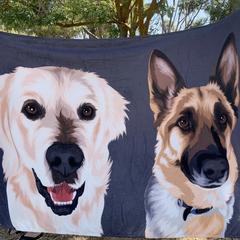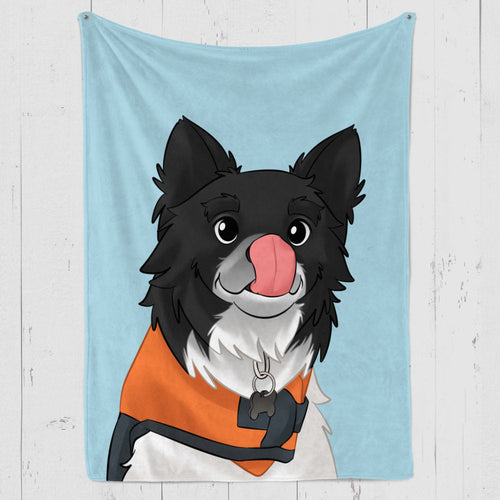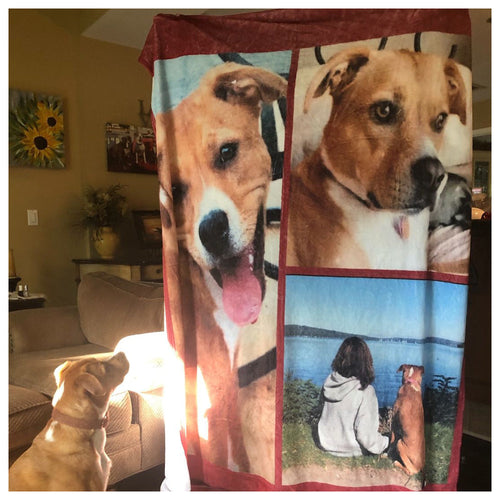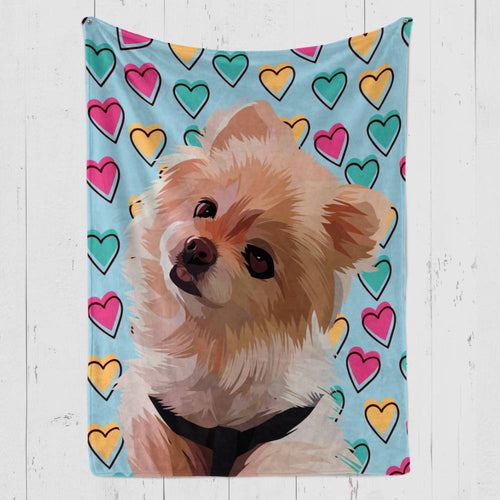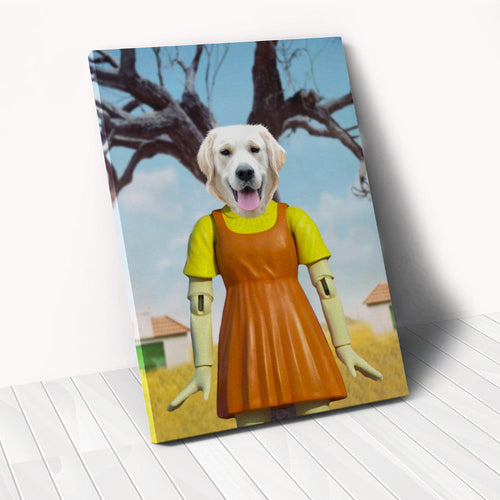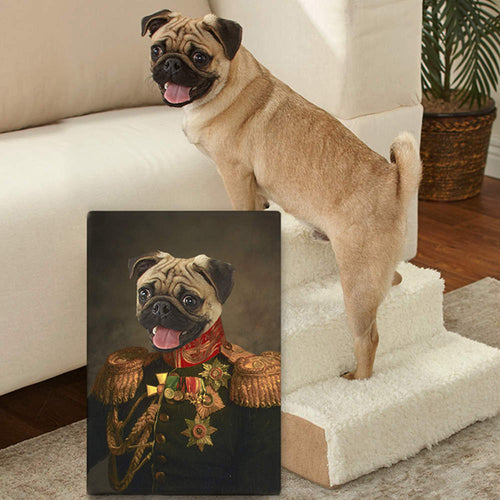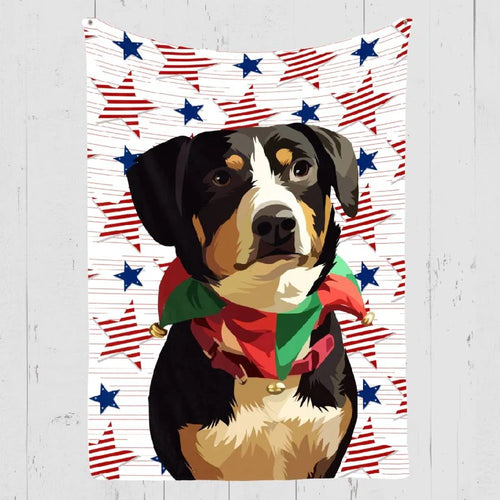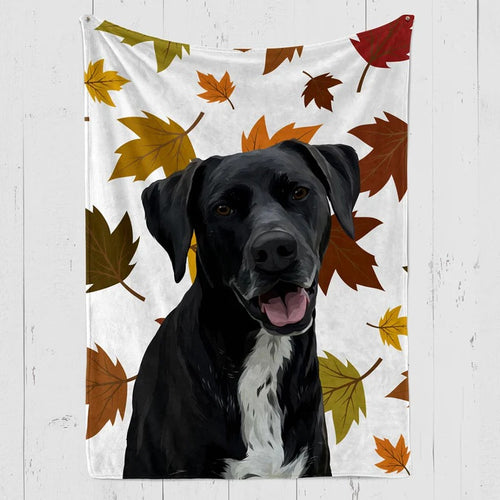
Every dog must be taught basic leash skills, regardless of their age, size, or lifestyle. Pet owners will face many situations where they will feel their furry babies must be leashed. Be it casual dining at pet-friendly restaurants, basic walks in the neighborhood, or hiking, your dog must go through proper and planned leash training.
It will help you take your furry companion for a walk around not only in the lanes but also in crowded places. With proper leash training, you do not have to worry about their safety. If dogs are not properly leash trained, you will see them pulling you down the street, running around you and wrapping your legs in the process, or considering the leash like a tug toy.
Before you start with your dog’s leash training, you must be aware of all the ways you can make walking on a leash fun and effective for the furry baby. Effective ways to train a dog to walk on a leash
Here are the following ways you train a dog to go for a walk on a leash.
Introduce the pooch to harness, and leash
It is very important to introduce the harnesses, collars, or leashes in the right manner to the dog. Play with the pooches when you are making them wear the leash. You can also reward them with treats. It will act as a reminder that wearing a leash and hanging out with you is worthwhile.
It is very important to develop a positive association with the pooch while you are making them wear the walking equipment. Give your furry pal enough time to get used to wearing collars, or leashes. For instance, put on the leash when they are playing, try putting it on for a few minutes, and make sure to recognize their effort with treats and love.
Start the training indoors
It is convenient to teach dogs to walk wearing leashes in a confined area in the initial days of the training. Also, indoor spaces have no distractions. Do not rush during the training process, you must take baby steps to see its efficacy. If you are thinking about how to walk a dog, you must start with the indoor area.
Besides you will also have to be particular in choosing the right training equipment as it is integral to the dog’s safety. In addition, you can also teach sound cues to the puppy, it helps them to get accustomed to the puppy leash.
Refrain from pulling
Also initially go for ‘loose-leash walking’. Whenever you find the furry baby to walk without pulling the leash, give them treats after every few paces.
In case the pooch has developed the habit of pulling the leash, pet owners or trainers must convince them that their pulling will not expedite their arrival to the goal, or if they walk politely, then they will be rewarded. Further, if dogs get fixated on any animal or person, call their name, and try to move in the opposite direction, otherwise, they will move towards the distraction and pull the leash.
Keep the training sessions short
Pooches have short attention spans, whether they are puppies or adult dogs. Hence try to keep their leash training sessions short but regular. Though they have a lot of energy, avoid stretching the sessions for a long period. Also, be patient with their basic daily activities and initial tantrums. The walking period must be fun and not a forceful activity.
Practice moving in different directions
If you are wondering ‘how to leash-train a puppy?’ Well, the process is the same. After you have mastered walking your dogs in one direction, now switch to doing the same in different directions. Keep moving in a varied direction and reward the pooch with treats every time they abide by your lead.
Explore new places to practice
After your dog has successfully mastered walking on a leash in a confined area, take them for a walk in new areas. A hallway is an ideal place after they have become proficient in walking in a small area. In all the new places, start the training with small steps and acknowledge their efforts with frequent treats. Then gradually shift to larger areas and shift to giving fewer treats.
After they show good behavior in the confined places and hallway, take them to less familiar places and follow the same strategy. Keep with the practice and you will be a master in coordinating the movement of your furry baby.
What are the benefits of leash training?
Mentioned below are some of the notable benefits of leash training.
Opportunities to roam independently
If the dog is properly leash trained, It can roam around and explore new places. It Increases outdoor time for both the pet owners and dogs.
Your pooch will get a break from the monotony of being inside the four walls. Leash training not only helps the pooch but also the owner to get fresh air and feel refreshed.
Exercises
Regular walking helps dogs with cardiovascular benefits. It is a win-win thing for the pet owner as they also get the chance to walk along with their furry babies.
Tips to curb common challenges with leash training
Here are some of the tips that you can follow to avoid common behaviors of the pooches when they are on a leash and ensure better leash-walking behavior:
If the dog is a determined puller
In case your pup continues to pull, do not make any effort to stop. Instead, just take a turn around and stop giving any attention to your dog, do not jerk the leash or pull it from the opposite direction. Do not respond until the pooch pays attention and comes towards you. If your furry pal comes to you, do not forget to reward him.
In addition, you can go for head halters, or front-hook harnesses if your dog has the tendency to pull the leash. If the dog is not responding to any of your training tactics, you can take the assistance of a qualified instructor.
If the dog lunges or chases
In case your pooch starts going after something or lunges, stop walking or dragging him/her. Avoid jerking the leash and calling out the name of the dog softly, make cheerful noises, or just stamp your feet. You can try to deviate the attention of the furry baby with a treat before he lunges on anyone. Also, be extremely alert and ensure that the target comes in close contact with your dog.
After the dogs respond to you, praise them and give them treats. Then, gently move them away from the spot. In case the pooch is not responding or giving attention to any of your actions, pull their leash gently. Refrain from dragging the leash at any cost. Hold the leash and walk toward something gently. This can spark their curiosity and prompt them to join you.
If the dog plays or bites the leash
If your dog is continuously turning around and is playing or biting with the leash, do not try to take it away from them or drag it. If you are pulling the leash towards you, the pooch will consider it as a tug toy. Instead, let the leash loose. It won’t trigger their competitiveness and anxiety. You do the opposite and move the leash towards the pooch.
You can also carry two leashes while taking your dog for a walk. If the dog grasps one leash, you can then leave the leash while holding the other one. After the pooch has dropped the leash, you can resume walking, praising the furry baby with treats. This will help the dog feel that walking with you is more about having fun and not tugging the leash.
If the dog barks frequently
If your furry pal has a propensity to bark at something or someone while walking, you can hold back, create distance, and not respond to the reaction of the pooch. You can also try to handle the situation with treats. Every time the pooches bark at any other thing or animal, you can divert their attention.
Dogs tend to bark impulsively if they do not receive proper exercise, hence besides giving treats, you must ensure that they are getting adequate mental and physical stimulation. When they get used to the process, give fewer treats and reduce the frequency of troubleshooting.
Frequently Asked Questions:
How can I teach my dog to walk without a leash?
You can train your dog for leash-free walking by using consistent commands, rewarding them with praise and treats, displaying confidence, practicing loose leash walking, and reinforcing basic commands.
Is it beneficial for dogs to walk without a leash?
Yes, for certain breeds, off-leash training can be advantageous as it allows them the freedom to run, jump, and play independently, promoting relaxation and natural behavior.
Are there distinctions between a training leash and a regular leash?
A training leash is designed explicitly for instructing dogs to respond to specific commands during training, while a regular leash serves general purposes, including basic training exercises.
When is the appropriate time to let a dog roam off-leash?
There isn't a fixed age for off-leash freedom; it depends on the individual dog. Even if a dog is proficient off-leash, it's prudent to temporarily use a leash in unfamiliar or unsecured environments.
When should pet owners commence leash training for their dogs?
Owners can initiate leash training for dogs at 12 to 16 weeks of age, and they can introduce collars or leashes as early as 7 to 8 weeks
What types of collars, harnesses, and leashes are recommended?
Flat collars are suitable for dogs that walk well on a leash without pulling. Ensure proper fit and adjustability. For strong pullers, consider harnesses to avoid neck strain. Traditional leather leashes are often preferred
What's the easiest method to acclimate a dog to wearing a harness or collar?
Gradually introduce the harness or collar by allowing the dog to play with it and associate it with positive experiences, such as treats. Initially, avoid attaching a leash.
How should I hold the leash most effectively?
Hold the leash with both hands for better control, threading your thumb through the loop at the end or using a finger grip, as it suits you.
How can I prevent my dog from pulling on the leash?
Use an appropriate leash and, when the dog pulls, stop, stand still, and wait for their attention. A chest-led harness may help, and avoid reinforcing pulling behavior.
How long should leash training sessions last?
Effective leash training typically takes about a month with consistent practice, starting from a young age.
What should I do if my dog exhibits fear or aggression during walks?
If your dog displays fear or aggression on walks, immediately reward them with treats and use a cheerful tone to help them feel more at ease.
Will treats help in leash training for dogs?
Yes, treats are effective in leash training, as they serve as positive reinforcement, acknowledging the dog's efforts.
How should I handle an excited dog during walks?
Handle an excited dog with care, divert their attention, and calm them with treats and praise. Avoid areas or situations that trigger excessive excitement.
Conclusion
Pet owners can open varied possibilities for the pooches while training them to walk on a leash. Though walking a dog does not necessarily need a leash, it becomes essential for an untrained dog. While leash training requires time and patience, with proper equipment and the above-mentioned training training strategies, you are good to go. Lastly, you must ensure that the training process is engaging.
Reference Links:
- https://www.akc.org/expert-advice/training/teach-puppy-walk-leash/
- https://www.animalhumanesociety.org/resource/teach-your-dog-walk-loose-leash
- https://www.rspcapetinsurance.org.au/pet-care/training-your-pet/5-ways-to-train-your-dog-to-walk-on-a-leash
- https://be.chewy.com/leash-train-dog-2/
- https://www.rspca.org.uk/adviceandwelfare/pets/dogs/training/walknicely
Similar Articles
Latest Review on Woof Blankets
To have such a masterpiece by my side every day is a gift for me and my memories with Rex. Thank you WoofBlankets for such an opportunity to recreate his image on a blanket.Lara o’ Miguel US, California

COLLECTION WORTH EVERY PENNY
BEST SELLERS
-
The Witch - Custom Pet Portrait
![]()
- -33%
CanvasSHOP NOW- Regular price
- from $59.95
- Sale price
- from $59.95
- Regular price
-
$89.95 - Unit price
- per
Sold out -
Halloween Custom Pet Blanket
![Halloween Custom Cat Blanket]()
- NEW
- -39%
BlanketsSHOP NOW- Regular price
- from $69.95
- Sale price
- from $69.95
- Regular price
-
$114.95 - Unit price
- per
Sold out -
The Dracula - Custom Pet Portrait
![]()
- -25%
CanvasSHOP NOW- Regular price
- from $59.95
- Sale price
- from $59.95
- Regular price
-
$79.95 - Unit price
- per
Sold out -
Woofy Single Color Custom Pet Blanket
![Woofy Single Custom Pet Blanket – Woof Blanket]()
- -41%
BlanketsSHOP NOW- Regular price
- from $64.95
- Sale price
- from $64.95
- Regular price
-
$109.95 - Unit price
- per
Sold out -
Summer Time Custom Pet Blanket
![Summer Time Custom Pet Blanket]()
- -39%
BlanketsSHOP NOW- Regular price
- from $69.95
- Sale price
- from $69.95
- Regular price
-
$114.95 - Unit price
- per
Sold out -
The Admiral - Custom Pet Portrait
![The Admiral - Custom Pet Portrait Online]()
- NEW
- -25%
CanvasSHOP NOW- Regular price
- from $59.95
- Sale price
- from $59.95
- Regular price
-
$79.95 - Unit price
- per
Sold out -
Wings of Loyalty - Custom Pet Portrait
![]()
- NEW
CanvasSHOP NOW- Regular price
- from $59.95
- Sale price
- from $59.95
- Regular price
-
- Unit price
- per
Sold out -
Celestial Paws - Custom Pet Portrait
![]() CanvasSHOP NOW
CanvasSHOP NOW- Regular price
- from $59.95
- Sale price
- from $59.95
- Regular price
-
- Unit price
- per
Sold out -
Woof Splash Custom Pet Blanket
![Woof Splash Custom Pet Blanket]()
- -39%
BlanketsSHOP NOW- Regular price
- from $69.95
- Sale price
- from $69.95
- Regular price
-
$114.95 - Unit price
- per
Sold out -
The Loyal Soul - Custom Pet Portrait
![]()
- NEW
SHOP NOW- Regular price
- from $59.95
- Sale price
- from $59.95
- Regular price
-
- Unit price
- per
Sold out -
Modern Pet Portraits
![Cute Dog Modern Pet Portraits Online]()
- NEW
- -36%
CanvasSHOP NOW- Regular price
- from $59.95
- Sale price
- from $59.95
- Regular price
-
$93.95 - Unit price
- per
Sold out -
Cartoonized Pet Portraits (New)
![Cartoonized Pet Custom Portraits Online]()
- -36%
SHOP NOW- Regular price
- from $59.95
- Sale price
- from $59.95
- Regular price
-
$93.95 - Unit price
- per
Sold out -
Pet Memorial Custom Photo Collage Blanket
![Personalized pet memorial quilt with photos]()
- -41%
BlanketsSHOP NOW- Regular price
- from $64.95
- Sale price
- from $64.95
- Regular price
-
$109.95 - Unit price
- per
Sold out -
The French Sailor - Custom Pet Portrait
![]()
- -25%
CanvasSHOP NOW- Regular price
- from $59.95
- Sale price
- from $59.95
- Regular price
-
$79.95 - Unit price
- per
Sold out -
The Policeman - Custom Pet Portrait
![]()
- NEW
- -25%
CanvasSHOP NOW- Regular price
- from $59.95
- Sale price
- from $59.95
- Regular price
-
$79.95 - Unit price
- per
Sold out -
The General - Custom Pet Portrait
![]()
- NEW
- -25%
CanvasSHOP NOW- Regular price
- from $59.95
- Sale price
- from $59.95
- Regular price
-
$79.95 - Unit price
- per
Sold out -
Woof Love Custom Pet Blanket
![Woof Love Custom Pet Blanket]()
- -39%
BlanketsSHOP NOW- Regular price
- from $69.95
- Sale price
- from $69.95
- Regular price
-
$114.95 - Unit price
- per
Sold out -
The Ambassador - Custom Pet Portrait
![The Ambassador - Custom Pet Portrait Online]()
- NEW
- -25%
CanvasSHOP NOW- Regular price
- from $59.95
- Sale price
- from $59.95
- Regular price
-
$79.95 - Unit price
- per
Sold out -
Fall In Love Custom Pet Blanket
![Fall In Love Custom Dog Blanket]()
- NEW
- -39%
BlanketsSHOP NOW- Regular price
- from $69.95
- Sale price
- from $69.95
- Regular price
-
$114.95 - Unit price
- per
Sold out -
The Classy Lady - Custom Pet Portrait
![The Classy Lady]()
- NEW
- -25%
CanvasSHOP NOW- Regular price
- from $59.95
- Sale price
- from $59.95
- Regular price
-
$79.95 - Unit price
- per
Sold out -
The Duke - Custom Pet Portrait
![The Duke - Custom Pet Portrait]()
- NEW
- -25%
CanvasSHOP NOW- Regular price
- from $59.95
- Sale price
- from $59.95
- Regular price
-
$79.95 - Unit price
- per
Sold out -
Dog In Suit- Custom Pet Portrait
![Dash Dog In Suit- Custom Pet Portrait Online]()
- NEW
- -25%
CanvasSHOP NOW- Regular price
- from $59.95
- Sale price
- from $59.95
- Regular price
-
$79.95 - Unit price
- per
Sold out -
The Princess - Custom Pet Portrait
![]()
- NEW
- -25%
CanvasSHOP NOW- Regular price
- from $59.95
- Sale price
- from $59.95
- Regular price
-
$79.95 - Unit price
- per
Sold out -
Modern Pet Portrait with One Mug
![Modern Pet Portrait with One Mug]()
- -25%
Print MaterialSHOP NOW- Regular price
- from $99.95
- Sale price
- from $99.95
- Regular price
-
$133.95 - Unit price
- per
Sold out -
The Aristocrat - Custom Pet Portrait
![The Aristocrat - Custom Pet Portrait At Best Price]()
- NEW
- -25%
CanvasSHOP NOW- Regular price
- from $59.95
- Sale price
- from $59.95
- Regular price
-
$79.95 - Unit price
- per
Sold out -
Single Color Custom Blanket with 1 Mug
![Single Color Custom Blanket with 1 Mug]() BlanketsSHOP NOW
BlanketsSHOP NOW- Regular price
- from $99.95
- Sale price
- from $99.95
- Regular price
-
- Unit price
- per
Sold out -
Single Color Custom Blanket with 2 Pillows
![Single Color Custom Pet Blanket with 2 Pillows]()
- -21%
BlanketsSHOP NOW- Regular price
- from $99.95
- Sale price
- from $99.95
- Regular price
-
$125.95 - Unit price
- per
Sold out -
The Dog in Suit Custom Pet Mug
![]()
- -20%
MugsSHOP NOW- Regular price
- $39.95
- Sale price
- $39.95
- Regular price
-
$49.95 - Unit price
- per
Sold out -
Angel Custom Pet Mug
![]()
- -20%
MugsSHOP NOW- Regular price
- $39.95
- Sale price
- $39.95
- Regular price
-
$49.95 - Unit price
- per
Sold out -
This Human Belongs To - Custom Pet Mug
![]()
- NEW
- -20%
MugsSHOP NOW- Regular price
- $39.95
- Sale price
- $39.95
- Regular price
-
$49.95 - Unit price
- per
Sold out -
It's Not Dog Hair Custom Pet Mug
![]()
- NEW
- -20%
MugsSHOP NOW- Regular price
- $39.95
- Sale price
- $39.95
- Regular price
-
$49.95 - Unit price
- per
Sold out -
My Dog Is My Valentine Custom Pet Mug
![]()
- NEW
- -20%
MugsSHOP NOW- Regular price
- $39.95
- Sale price
- $39.95
- Regular price
-
$49.95 - Unit price
- per
Sold out -
3 Photos With Message Custom Pet Mug
![]()
- NEW
- -20%
MugsSHOP NOW- Regular price
- $39.95
- Sale price
- $39.95
- Regular price
-
$49.95 - Unit price
- per
Sold out -
My Valentine Has Four Legs- Personalized Mugs
![]()
- NEW
- -20%
MugsSHOP NOW- Regular price
- $39.95
- Sale price
- $39.95
- Regular price
-
$49.95 - Unit price
- per
Sold out -
Dog Mamma Custom Pet Coffee Mug
![]()
- -20%
MugsSHOP NOW- Regular price
- $39.95
- Sale price
- $39.95
- Regular price
-
$49.95 - Unit price
- per
Sold out -
Uncle Sam - Custom Pet Portrait
![]()
- NEW
- -25%
CanvasSHOP NOW- Regular price
- from $59.95
- Sale price
- from $59.95
- Regular price
-
$79.95 - Unit price
- per
Sold out -
The Revolutionary Emperor - Custom Pet Portrait
![]()
- NEW
- -25%
CanvasSHOP NOW- Regular price
- from $59.95
- Sale price
- from $59.95
- Regular price
-
$79.95 - Unit price
- per
Sold out -
The Princess Paws - Custom Pet Portrait
![]()
- -25%
CanvasSHOP NOW- Regular price
- from $59.95
- Sale price
- from $59.95
- Regular price
-
$79.95 - Unit price
- per
Sold out -
Exclusive Custom Pet Blanket
![Exclusive Custom Pet Blanket]()
- -39%
BlanketsSHOP NOW- Regular price
- from $69.95
- Sale price
- from $69.95
- Regular price
-
$114.95 - Unit price
- per
Sold out -
The Dark Crusader Knight - Custom Pet Portrait
![]()
- -25%
CanvasSHOP NOW- Regular price
- from $59.95
- Sale price
- from $59.95
- Regular price
-
$79.95 - Unit price
- per
Sold out

